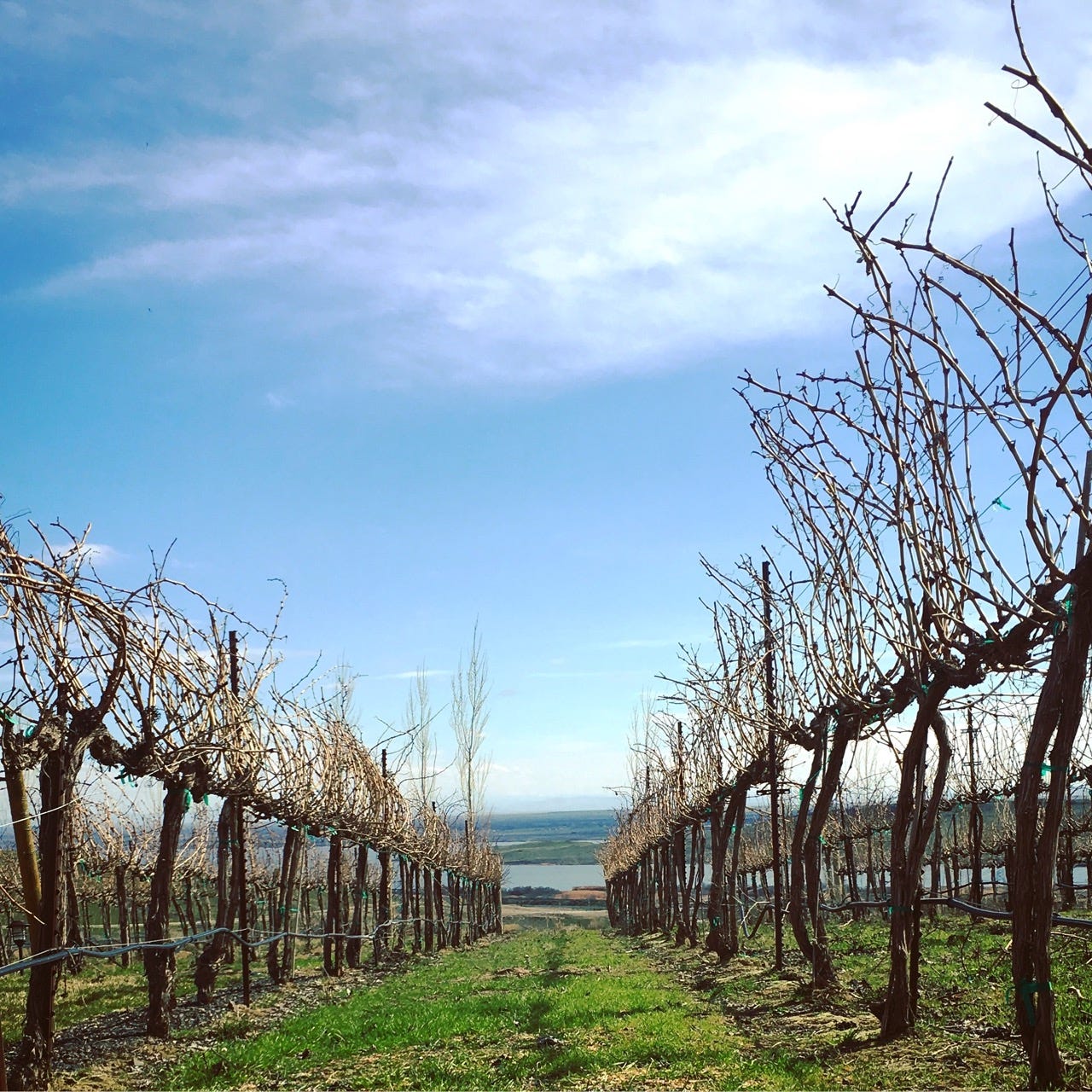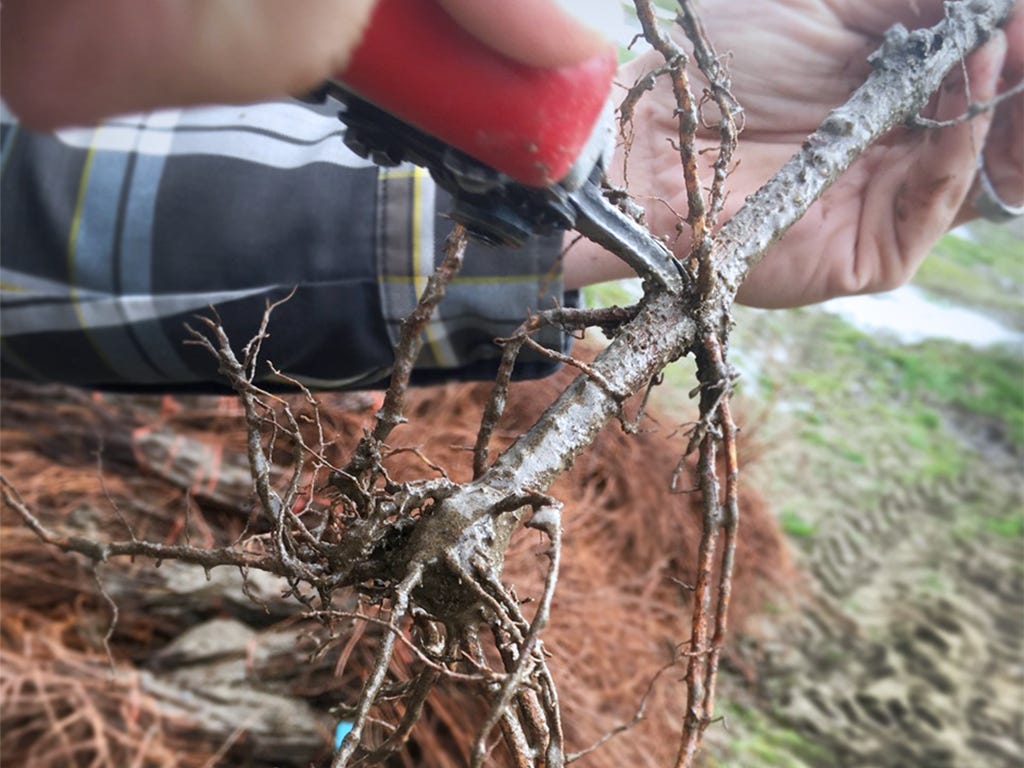Own-Rooted: A Vine Stock Nursery Story
Washington’s soils create an uncommon opportunity for viticulturists: a nursery of own-rooted vines
Phylloxera is a global scourge. Mostly.
This North American root aphid devastated European grapevines in the late nineteenth century, wiping out vast vineyard acreage and forcing the replantation of nearly all Continental vineyards. American native grapevines like Vitis aestivalis were immune to the pest, having evolved mechanisms to fend it off, but European varieties of V. vinifera did not have native resistance and proved easy prey for the bug.
So, after having (accidentally) exported the louse, America intentionally exported resistant rootstock. Today across Europe, and indeed across most of the planet, Old World grapes stand on New World feet.
But the louse doesn’t thrive everywhere. It fares poorly in sandy or dry, stony strata, so there are still some isolated pockets of the globe where European native grapes still live un-grafted. You might stumble upon them in southern France or Spain, parts of Italy (especially Sicily), Chile, Portugal and Greece.
And all over Washington State.

Although phylloxera-vulnerable European varieties dominate the region’s 50,000 acres of vineyards, nearly every vine is own-rooted and, notably, pest free. The Riesling, Bordeaux grapes, Syrah, and a staggering panoply of others, 70 varieties in all, are seamless wood from the frill of their buds to their deepest root tips.
The secret lies in the soils. They’re a happy, if cataclysmic, result of a series of Ice Age deluges—the Missoula Floods—that washed silt and sand across vast swaths of the region. After each successive flooding event, strong winds picked up the tiniest of the silty particles and blew them eastward, blanketing the landscape in a think layer of fine aeolian sediment, called loess.
Water moves slowly through loess soils, making it generally a poor substrate for grape growing (grapes don’t like damp feet). But most of Washington’s viticulture happens east of the Cascade Mountains, and it’s utterly arid, a rain shadow zone, with fewer than ten inches of rainfall each year. Nearly every vineyard must be rigged for irrigation, tapping into the mighty Columbia and Snake Rivers for their vital moisture.
Such fine-grained, powdery soils make it nearly impossible for phylloxera to get a toe-hold, so own-rooted vines rule the day. That means that when the top of a vine dies back after one of the region’s hard winters, the new shoots that sprout from the base will be true to its genetic lineage: Cabernet Sauvignon roots will sprout and yield Cabernet Sauvignon grapes (not insipid rootstock grapes, as they would in France or California or nearly anywhere else).
It also means that viticulturists can simply take cuttings from their existing vines and propagate them to make new ones, no grafting required.

In the Horse Heaven Hills, a curl of curvy landscape that hugs the Columbia River about ten miles west of Paterson, Mercer Canyons propagates their own vines on a very large scale. The company’s holdings encompass 12,000 acres, mostly row crops like carrots, potatoes, corn, and wheat, but a quarter of the land is vineyard for fine wine grapes.
Being principally agriculturists—the company has a 125-year track record of farming in the region—they take their vine stock nursery seriously. In fact, say John Derrick, vice president of vineyard operations, and Richard Hoff, director of viticulture, their operation is probably one of the largest in Washington State. I recently got a tour as the men explained the process:
During the annual vineyard pruning cycle in late winter, workers collect the canes of last year’s growth from the target vines. These spindly stalks are soaked in water for twenty-four hours to re-hydrate after the dry dormancy of winter, then they’re bundled and planted in a specially prepared bed (above; note the extremely fine soil texture).
Counter-intuitively, the canes are buried with their cut end facing upward, then covered with about four inches of soil and black plastic. As the cut end of the vine stock is warmed by the sun, it hardens into a hard, scaly scab called a callus, then begins putting out root buds.
After a year in this crib, the baby vines are dug and re-planted, roots down this time, into a second field to develop further. After another year of growth, the young vines can be harvested from this nursery bed, pruned back to two strong top buds, and planted out into their final location in the vineyard.
The process is labor-intensive, say the men, but the company has no need for expensive, purchased nursery stock. And when you’re overseeing 3,000 acres of vines, those financial savings add up. (Thank you, Missoula Floods.)
So, are un-grafted vines necessarily better? Or more precisely, are the resulting wines? That debate has long raged. Some people cite research, including a study conducted in Washington State, that asserts no perceivable qualitative difference in the wines of grafted and un-grafted vines. Other tasters contend that own-rooted vines produce wines of greater finesse and purity, albeit conceding that these factors may accrue more to planting density, vine age, and other viti- and vinicultural factors than to the absence of grafted rootstock.
I have zero experience comparing wines from grafted and un-grafted vines grown under identical conditions (I suspect few people do), and I am not a viticultural expert. But as a gardener and horticulturist, I have a predilection for plants on their own roots. It makes intuitive sense that a vine would evolve its parts to work well together. A grower adds to this evolutionary pressure by selecting only ideal vines for propagation, part of the theory behind massal selection, an Old World practice in which a vigneron chooses wood from the best-performing vines and propagates them for new plantings. These days the selections must be grafted onto resistant rootstock, but in a phylloxera-free zone, that step’s not needed. That limits the number of variables standing between the original, desirable traits of the cutting and the final expression of the vine. Over time the genetic stock can become better suited to site, and possibly more expressive of the particulars of its terroir.
I don’t know if that necessarily makes the wines more delicious, but I’d love to find out.
I’m grateful to Washington State Wine for sponsoring my travel.
This article won Third Place in the 2017 Born Digital Wine Awards. My thanks to the judges for this great honor.






